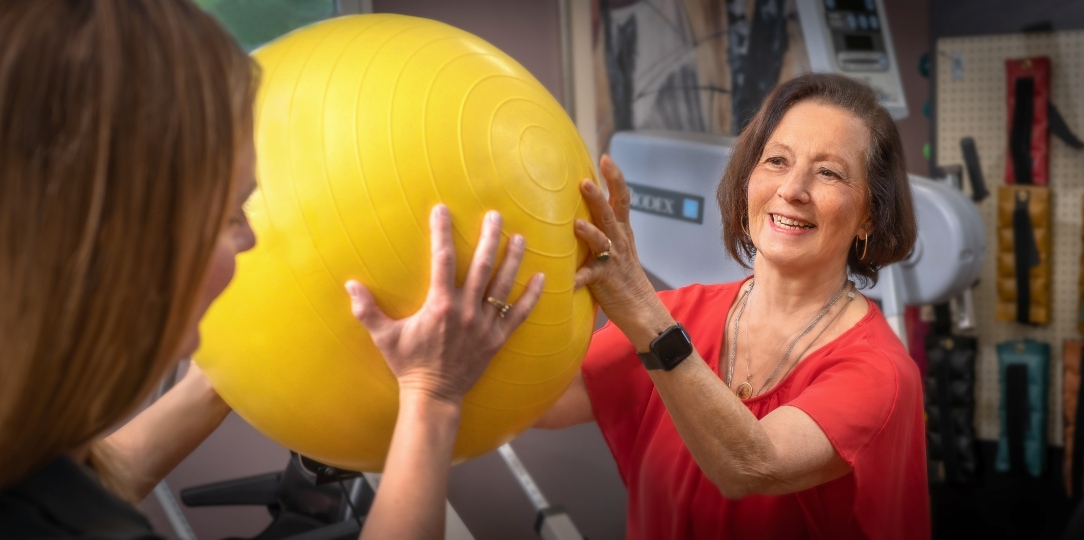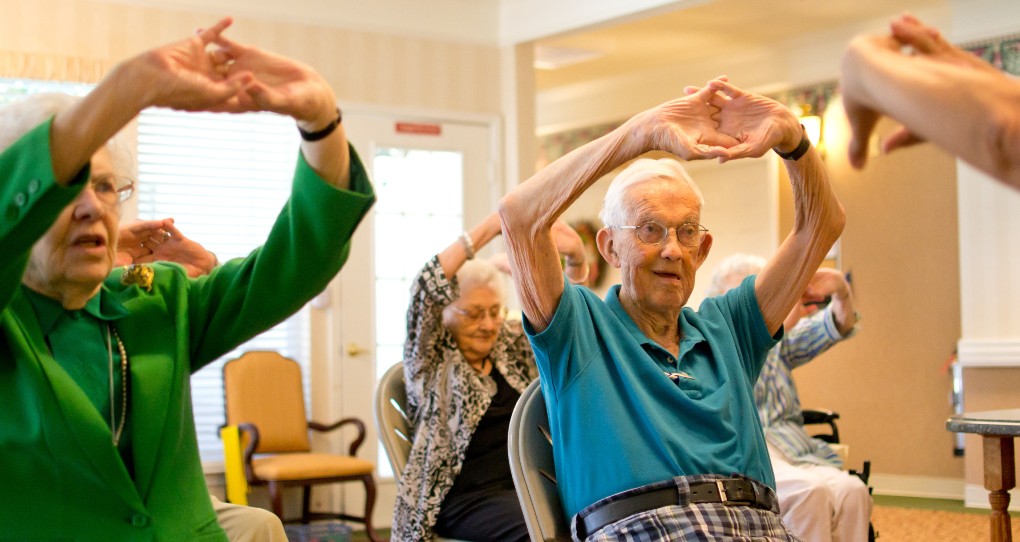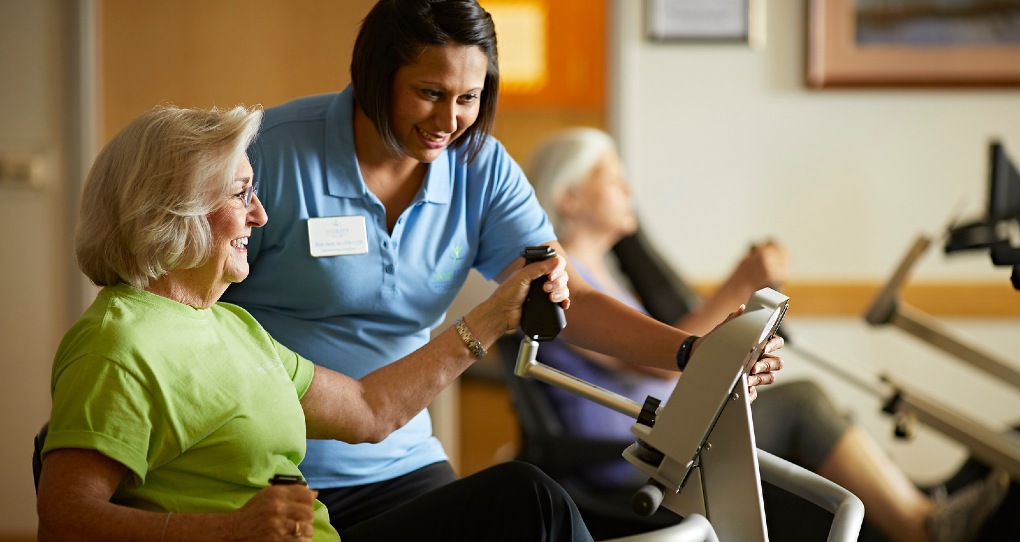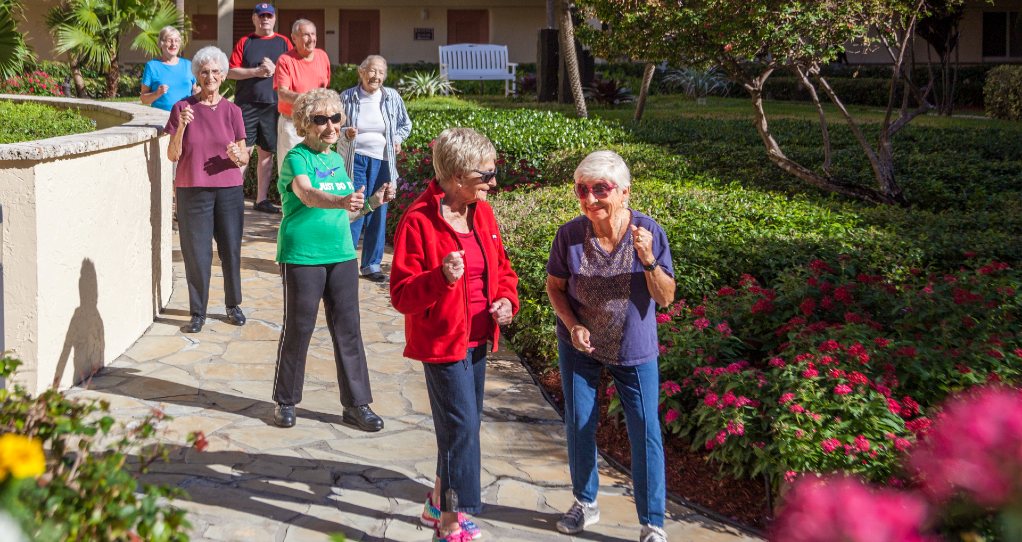COVID-19 Rehabilitation Program
April 16, 2021
For over a year, COVID-19 has transformed all of our daily lives. But if you’ve suffered and recovered from COVID-19, the daily impact of the disease often goes deeper. The active virus may be gone, and yet you may not feel fully “better.” Weeks or months later, you may continue to experience fatigue, headaches, shortness of breath, dry or persistent cough, muscle weakness, loss of sense of smell, or other lingering side effects that impact your daily routines.
At Ageility, our therapists determined the need for a COVID-19 rehab program for seniors early in the pandemic, when we checked on the older adults in our communities who had officially recovered from COVID-19. Usually, they still were weak. Some needed to stop halfway down the hall to catch their breath. Others relied on the hallway rails for added support as they walked or reported feeling weak just standing to do the dishes. Many reported a persistent “brain fog” or other lingering effects.
Determined to help patients find full recovery, our therapists developed a first-of-its-kind COVID-19 recovery therapy program that helps older adults regain strength and total-body wellness, so they can more actively engage in the activities they enjoyed before.
What is the COVID-19 Recovery Program?
The Ageility COVID-19 rehab program is designed to identify and address the residual effects of the coronavirus on seniors and the varied symptoms that remain.
What can you do if you are a senior recovering from COVID-19?
- Catch weakness early, and reduce the risk of falls.
If you are struggling to get up from a chair, or using furniture to help aid in movement, there’s a serious risk for a fall. Instead of taking a wait and see approach, COVID-19 rehab helps patients build core strength and prevent a loss of balance and its complications. - Be aware of what your body is telling you.
Listen to your body and gain a better understanding of why certain activities that were a breeze before now leave you feeling drained and fatigued. If you are feeling tired while running to the grocery store, taking a shower or just getting yourself ready for the day, your body is telling you to slow down. What you were able to easily do before may now require a rest break, or you may need a nap in the middle of the day. Better body awareness helps you be mindful of what you’re feeling, so that your symptoms can be managed instead of ignored. You’ll learn how to look for symptoms, rather than push through your daily routine or avoid movement altogether. You’ll need to build up endurance slowly, but some movement can help restore you to strength. Just carefully monitor your activity tolerance as you slowly push yourself to improve. - Provide customized support.
A custom set of solutions can make a big difference. For example, if one of your biggest symptoms is fatigue, COVID-19 rehab addresses which factors make your fatigue worse. With this in mind, you’ll try solutions that are specific to you. These may include strategies, like breathing exercises, strategies for rest breaks and added support in places where you need it. Sometimes these can be surprisingly simple. You might need to sit while getting dressed. Or you might try environmental adaptations. For example, in the bathroom, you might need a tub bench. Or you might need chairs on the elevator or in the hallway to take a rest. These small, but important, changes will make it possible for you to continue to move and gain strength, and lower your fatigue - Include all branches of therapy.
COVID-19 rehab is similar to other types of rehab, such as therapy after hip replacement, in that you’ll need to rebuild endurance. But where COVID-19 rehab differs is that it needs to address not just localized physical issues, but every part and function of the body. COVID-19 creates a major whole-body inflammatory response. Because it involves many different organ systems in your body, COVID-19 rehab requires a larger team of therapists – physical, occupational and speech therapists with specialized expertise. These specialists working as a team give you the best chance for a full recovery - Find the root cause of symptoms.
There are over 100 symptoms that you might experience after COVID-19, including tremors, rashes, hallucinations and ringing in the ears. Instead of addressing just the symptoms, COVID-19 rehab looks deeper, such as checking how the heart and lungs are functioning, too. COVID-19 therapy determines the root cause of symptoms, using a global assessment and a comprehensive approach. - Assess cognitive skills including memory and thinking, as well as focusing and concentration abilities.
One of the most common problems during recovery is brain fog. Everyone experiences it differently, so it’s important to have an evaluation to better identify the specific cognitive challenges you may be having. It’s important to figure out whether your mood is affected, or whether you’re having a tough time with organizing your thoughts. Sometimes, the symptoms may even come and go. - Measure progress.
It’s important to look at changes in your symptoms over time. During your first COVID-19 rehab consult, therapists ask clear questions on how you’re feeling now compared to before. Questionnaires are done face to face, so you’re listened to and supported. Ageility therapists also do a cognitive screen, which can help clarify your recovery needs further. Because the assessments look at the full range of abilities affected by COVID-19, they can pick up on subtle differences that are hard to discover without an evaluation. COVID-19 rehab also includes a series of functional assessments, which tell therapists what you’re able to do and how you feel after a certain amount of activity. Quantifying the impact of COVID-19 helps therapists track your progress and find out exactly what you need.
How can I find COVID-19 rehab services?
If you or someone you love are still struggling even after COVID-19 recovery – if you’re still not back to your old self, or feeling limited it what you can do – contact Ageility at [email protected] to learn how we can help or search for an Ageility location near you.




